Optimum Size of Hybrid Renewable Energy System to Supply the Electrical Loads of the Northeastern Sector in the Kingdom of Saudi Arabia
Abstract
1. Introduction
- A new approach, the crow search algorithm (CSA), is suggested to evaluate the optimal configuration of HRESs installed in the northeastern region of the Kingdom of Saudi Arabia.
- Our target is to achieve the most economic and efficient use of HRESs.
- A comparison to the EHO, GOA, HHO, SOA, and SHO methods is conducted to assess the proposed CSA.
- The robustness, competence, and preference of the proposed CSA are confirmed via the conducted analyses.
2. Mathematical Model Formulation
2.1. Model of Photovoltaic Panel
2.2. Wind Turbine Model
2.3. Model of Battery
2.4. Model of DG
2.5. Model of Inverter
3. Main Aspects of Crow Search Algorithm
4. Formulated Optimization Problem
4.1. The Fitness Function
4.2. The Proposed CSA-Based Methodology
| Algorithm 1 Pseudo code of the proposed CSA |
|
5. Results and Discussions
6. Conclusions
Author Contributions
Funding
Institutional Review Board Statement
Informed Consent Statement
Data Availability Statement
Acknowledgments
Conflicts of Interest
References
- Gonzalez, A.; Riba, J.R.; Rius, A.; Puig, R. Optimal sizing of a hybrid grid-connected photovoltaic and wind power system. Appl. Energy 2015, 154, 752–762. [Google Scholar] [CrossRef]
- Kaabeche, A.; Belhamel, M.; Ibtiouen, R. Sizing optimization of grid-independent hybrid photovoltaic/wind power generation system. Energy 2011, 2, 1214–1222. [Google Scholar] [CrossRef]
- Fathy, A.; Kaaniche, K.; Alanazi, T.M. Recent approach based social spider optimizer for optimal sizing of hybrid PV/wind/battery/diesel integrated microgrid in Aljouf region. IEEE Access 2020, 8, 57630–57645. [Google Scholar] [CrossRef]
- Daming, X.; Kang, L.; Chang, L.; Cao, B. Optimal Sizing of Standalone Hybrid Wind/PV Power Systems Using Genetic Algorithms. In Proceedings of the 18th Canadian Conference on Electrical and Computer Engineering, Saskatoon, SK, Canada, 1–5 May 2005; pp. 1722–1725. [Google Scholar]
- Hadidian-Moghaddam, M.J.; Arabi-Nowdeh, S.; Bigdeli, M. Optimal sizing of a stand-alone hybrid photovoltaic/wind system using new grey wolf optimizer considering reliability. J. Renew. Sustain. Energy 2016, 8, 035903. [Google Scholar] [CrossRef]
- Nedim, T.; Çelebi, N.; Bozok, N. Optimum unit sizing of wind-PV-battery system components in a typical residential home. In Proceedings of the 4th International Renewable and Sustainable Energy Conference (IRSEC), Marrakesh, Morocco, 14–17 November 2016; pp. 432–436. [Google Scholar]
- Jihane, K.; Cherkaoui, M. Optimal sizing of hybrid renewable PV/Wind battery system using LPSP methods. In Proceedings of the 6th International Conference on Systems and Control (ICSC), Batna, Algeria, 7–9 May 2017; pp. 226–230. [Google Scholar]
- Rachid, B.; Zhang, L.; Barakat, G. Optimal sizing study of hybrid wind/PV/diesel power generation unit. Sol. Energy 2011, 85, 100–110. [Google Scholar]
- Lu, Z.; Barakat, G.; Yassine, A. Design and optimal sizing of hybrid PV/wind/diesel system with battery storage by using DIRECT search algorithm. In Proceedings of the 15th International Power Electronics and Motion Control Conference (EPE/PEMC), Novi Sad, Serbia, 4–6 September 2012; p. DS3b-19. [Google Scholar]
- Azah, M.; Khatib, T. Optimal sizing of a PV/wind/diesel hybrid energy system for Malaysia. In Proceedings of the IEEE International Conference on Industrial Technology (ICIT), Cape Town, South Africa, 25–28 February 2013; pp. 752–757. [Google Scholar]
- Mariem, S.; Abdelkafi, A.; Krichen, L. Optimal sizing of stand-alone photovoltaic/wind/hydrogen hybrid system supplying a desalination unit. Sol. Energy 2015, 120, 263–276. [Google Scholar]
- Fathy, A. A reliable methodology based on mine blast optimization algorithm for optimal sizing of hybrid PV-wind-FC system for remote area in Egypt. Renew. Energy 2016, 95, 367–380. [Google Scholar] [CrossRef]
- Tégani, I.; Aboubou, A.; Ayad, M.Y.; Becherif, M.; Saadi, R.; Kraa, O. Optimal sizing design and energy management of stand-alone photovoltaic/wind generator systems. Energy Procedia 2014, 50, 163–170. [Google Scholar] [CrossRef]
- Yusuf, G.; Vaidya, R.; Nunna, H.S.V.S.K.; Kamalasadan, S.; Doolla, S. Optimal pv–battery sizing for residential and commercial loads considering grid outages. In Proceedings of the IEEE International Conference on Power Electronics, Smart Grid and Renewable Energy (PESGRE2020), Kerala, India, 2–4 January 2020; pp. 1–5. [Google Scholar]
- Nabiha, B.; Chaabene, M. Sizing optimization tool for wind/photovoltaic/battery plant considering potentials assessment and load profile. In Proceedings of the IREC2015 The Sixth International Renewable Energy Congress, Sousse, Tunisia, 24–26 March 2015; pp. 1–6. [Google Scholar]
- Bilal, B.O.; Sambou, V.; Ndiaye, P.A.; Kébé, C.M.F.; Ndongo, M. Study of the influence of load profile variation on the optimal sizing of a standalone hybrid PV/wind/battery/diesel system. Energy Procedia 2013, 36, 1265–1275. [Google Scholar] [CrossRef]
- Hamanah, W.M.; Abido, M.A.; Alhems, L.M. Optimum sizing of hybrid pv, wind, battery and diesel system using lightning search algorithm. Arab. J. Sci. Eng. 2020, 3, 1871–1883. [Google Scholar] [CrossRef]
- Shafiqur, R.; El-Amin, I. Study of a solar pv/wind/diesel hybrid power system for a remotely located population near Arar, Saudi Arabia. Energy Explor. Exploit. 2015, 4, 591–620. [Google Scholar]
- Khalid, A.; Dehshiri, S.S.H.; Dehshiri, S.J.H.; Mostafaeipour, A.; Issakhov, A.; Techato, K. Use of a Hybrid Wind–Solar–Diesel–Battery Energy System to Power Buildings in Remote Areas: A Case Study. Sustainability 2021, 13, 8764. [Google Scholar]
- Diab, A.A.Z.; Sultan, H.M.; Mohamed, I.S.; Kuznetsov, O.N.; Do, T.D. Application of different optimization algorithms for optimal sizing of PV/wind/diesel/battery storage stand-alone hybrid microgrid. IEEE Access 2019, 7, 119223–119245. [Google Scholar] [CrossRef]
- Abbassi, A.; Ben Mehrez, R.; Abbassi, R.; Jerbi, H.; Saidi, S.; Jemli, M. Eco-feasibility study of a distributed power generation system driven by renewable green energy sources. Energy Sources Part A Recovery Util. Environ. Eff. 2022, 44, 3981–3999. [Google Scholar] [CrossRef]
- Zhao, L.; Jerbi, H.; Abbassi, R.; Liu, B.; Latifi, M.; Nakamura, H. Sizing renewable energy systems with energy storage systems based microgrids for cost minimization using hybrid shuffled frog-leaping and pattern search algorithm. Sustain. Cities Soc. 2021, 73, 103124. [Google Scholar] [CrossRef]
- Abbassi, A.; Mehrez, R.B.; Abbassi, R.; Saidi, S.; Albdran, S.; Jemli, M. Improved off-grid wind/photovoltaic/hybrid energy storage system based on new framework of Moth-Flame optimization algorithm. Int. J. Energy Res. 2022, 46, 6711–6729. [Google Scholar] [CrossRef]
- Li, N.; Su, Z.; Jerbi, H.; Abbassi, R.; Latifi, M.; Furukawa, N. Energy management and optimized operation of renewable sources and electric vehicles based on microgrid using hybrid gravitational search and pattern search algorithm. Sustain. Cities Soc. 2021, 75, 103279. [Google Scholar] [CrossRef]
- Suresh, M.; Meenakumari, R.; Panchal, H.; Priya, V.; El Agouz, E.S.; Israr, M. An enhanced multiobjective particle swarm optimisation algorithm for optimum utilisation of hybrid renewable energy systems. Int. J. Ambient. Energy 2022, 43, 2540–2548. [Google Scholar] [CrossRef]
- Nuvvula, R.S.; Devaraj, E.; Elavarasan, R.M.; Taheri, S.I.; Irfan, M.; Teegala, K.S. Multi-objective mutation-enabled adaptive local attractor quantum behaved particle swarm optimisation based optimal sizing of hybrid renewable energy system for smart cities in India. Sustain. Energy Technol. Assess. 2022, 49, 101689. [Google Scholar] [CrossRef]
- Al-Othman, A.; Tawalbeh, M.; Martis, R.; Dhou, S.; Orhan, M.; Qasim, M.; Olabi, A.G. Artificial intelligence and numerical models in hybrid renewable energy systems with fuel cells: Advances and prospects. Energy Convers. Manag. 2022, 253, 115154. [Google Scholar] [CrossRef]
- He, Y.; Guo, S.; Zhou, J.; Ye, J.; Huang, J.; Zheng, K.; Du, X. Multi-objective planning-operation co-optimization of renewable energy system with hybrid energy storages. Renew. Energy 2022, 184, 776–790. [Google Scholar] [CrossRef]
- Derick, M.; Rani, C.; Rajesh, M.; Farrag, M.E.; Wang, Y.; Busawon, K. An improved optimization technique for estimation of solar photovoltaic parameters. Sol. Energy 2017, 157, 116–124. [Google Scholar] [CrossRef]
- Das, S. Development of a Low-cost, Portable, and Programmable Solar Module to Facilitate Hands-on Experiments and Improve Student Learning. In Proceedings of the ASEE Annual Conference & Exposition, New Orleans, LA, USA, 26 June 2016. [Google Scholar]
- Rehman, S.; Alam, M.M.; Alhems, L.M.; Rafique, M.M. Horizontal axis wind turbine blade design methodologies for efficiency enhancement—A review. Energies 2018, 11, 506. [Google Scholar] [CrossRef]
- Khan, M.J.; Iqbal, M.T. Pre-feasibility study of stand-alone hybrid energy systems for applications in Newfoundland. Renew. Energy 2005, 6, 835–854. [Google Scholar] [CrossRef]
- El-Hefnawi, S.H. Photovoltaic diesel-generator hybrid power system sizing. Renew. Energy 1998, 1, 33–40. [Google Scholar] [CrossRef]
- Ashari, M.; Nayar, C.V. An optimum dispatch strategy using set points for a photovoltaic (PV)–diesel–battery hybrid power system. Sol. Energy 1999, 1, 1–9. [Google Scholar] [CrossRef]
- Askarzadeh, A. A novel metaheuristic method for solving constrained engineering optimization problems: Crow search algorithm. Comput. Struct. 2016, 169, 1–12. [Google Scholar] [CrossRef]
- Kaabeche, A.; Belhamel, M.; Ibtiouen, R. Techno-economic valuation and optimization of integrated photovoltaic/wind energy conversion system. Sol. Energy 2011, 10, 2407–2420. [Google Scholar] [CrossRef]
- Ashraf, M.A.; Liu, Z.; Alizadeh, A.A.; Nojavan, S.; Jermsittiparsert, K.; Zhang, D. Designing an optimized configuration for a hybrid PV/Diesel/Battery Energy System based on metaheuristics: A case study on Gobi Desert. J. Clean. Prod. 2020, 270, 122467. [Google Scholar] [CrossRef]
- Bukar, A.L.; Tan, C.W.; Lau, K.Y. Optimal sizing of an autonomous photovoltaic/wind/battery/diesel generator microgrid using grasshopper optimization algorithm. Sol. Energy 2019, 188, 685–696. [Google Scholar] [CrossRef]
- Al-Shamma’a, A.A.; Hussein Farh, H.M.; Noman, A.M.; Al-Shaalan, A.M.; Alkuhayli, A. Optimal Sizing of a Hybrid Renewable Photovoltaic-Wind System-Based Microgrid Using Harris Hawk Optimizer. Int. J. Photoenergy 2022, 2022, 4825411. [Google Scholar] [CrossRef]

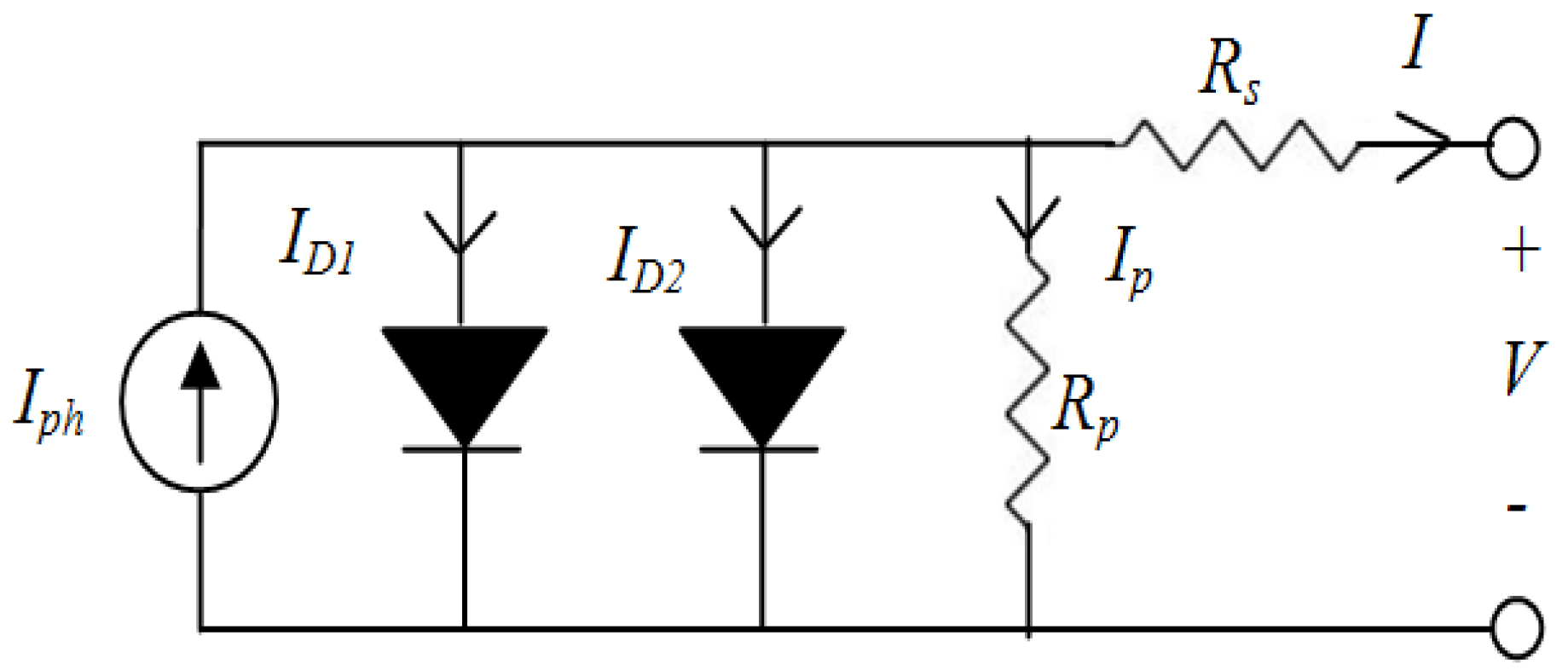
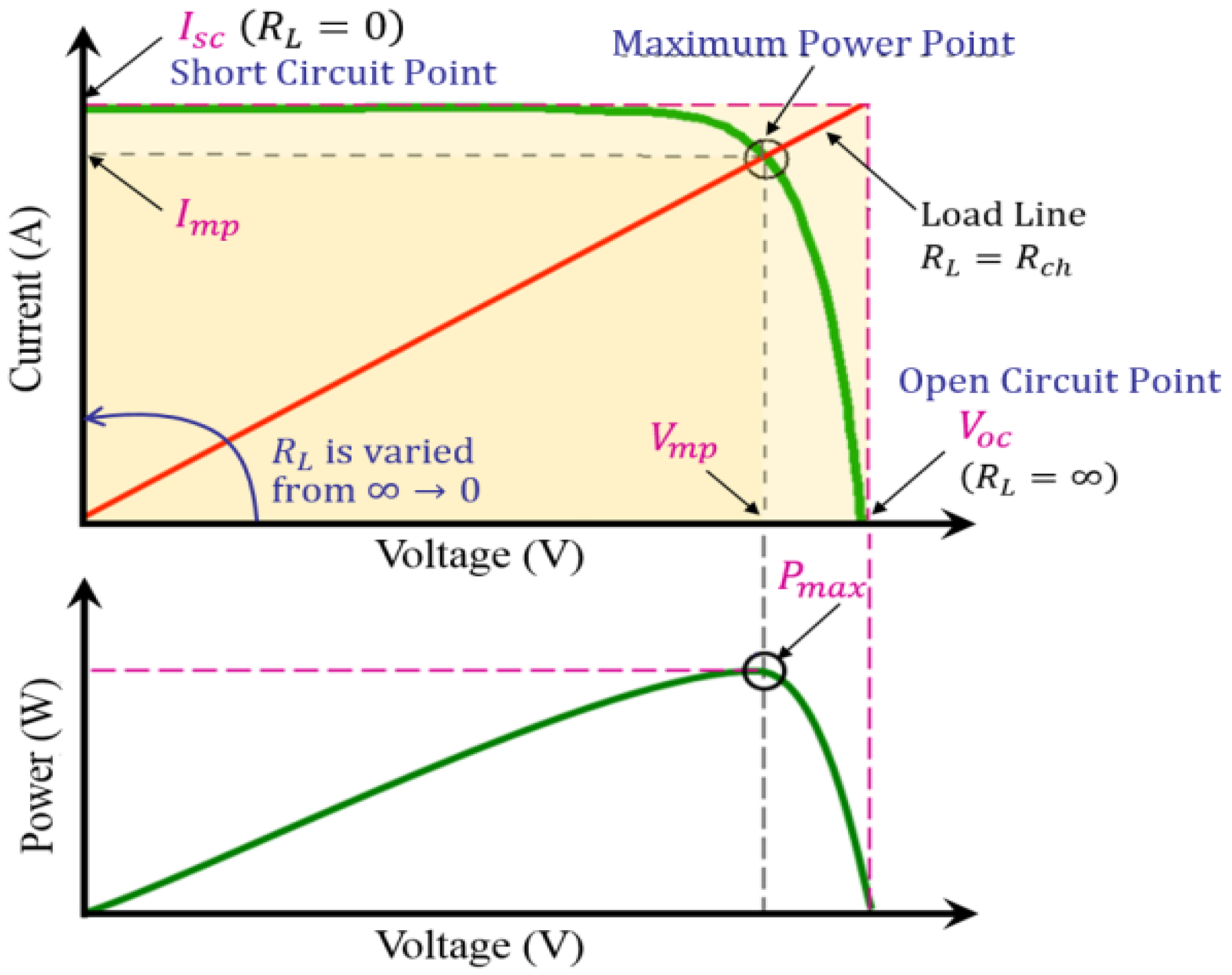
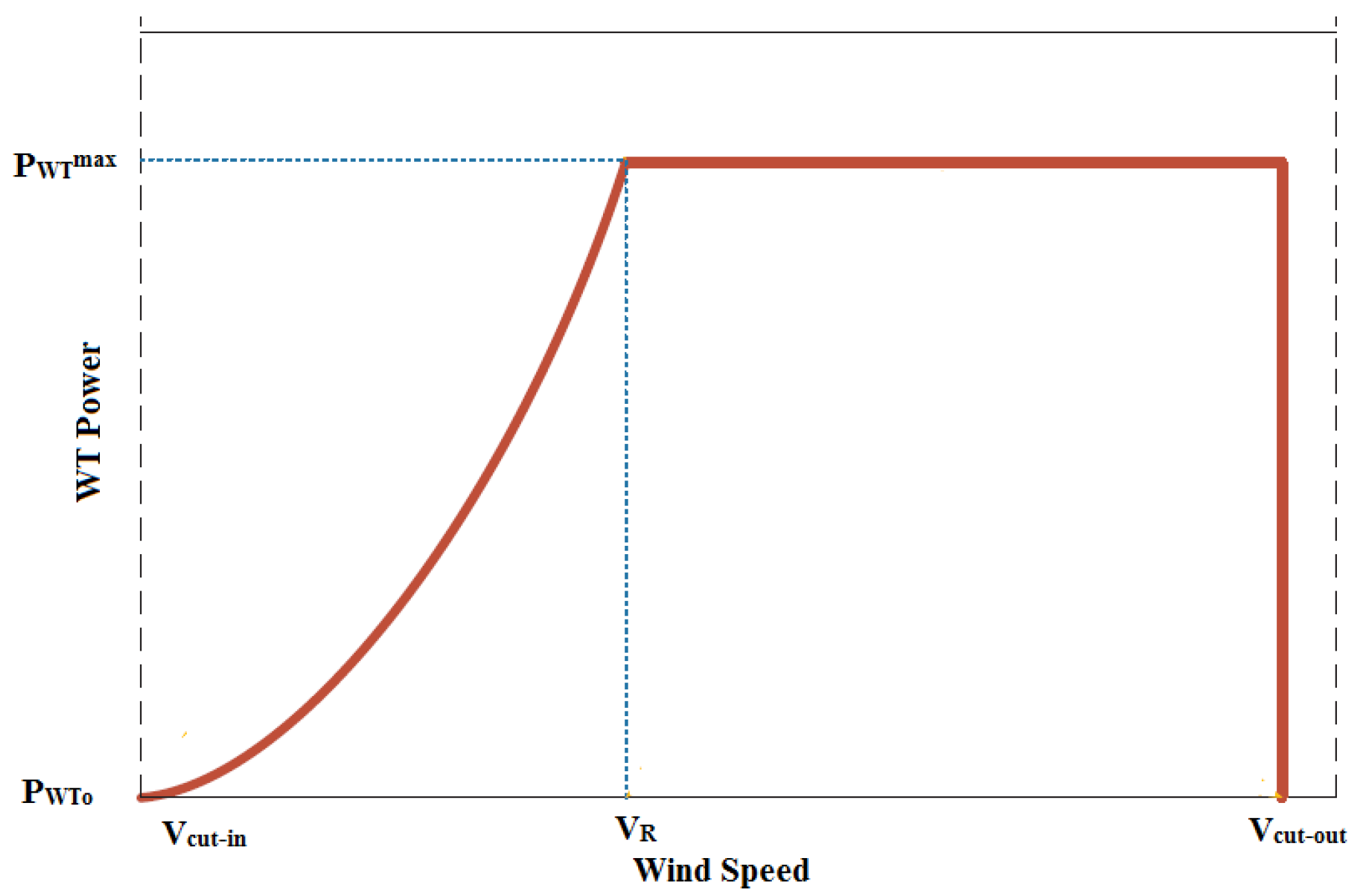
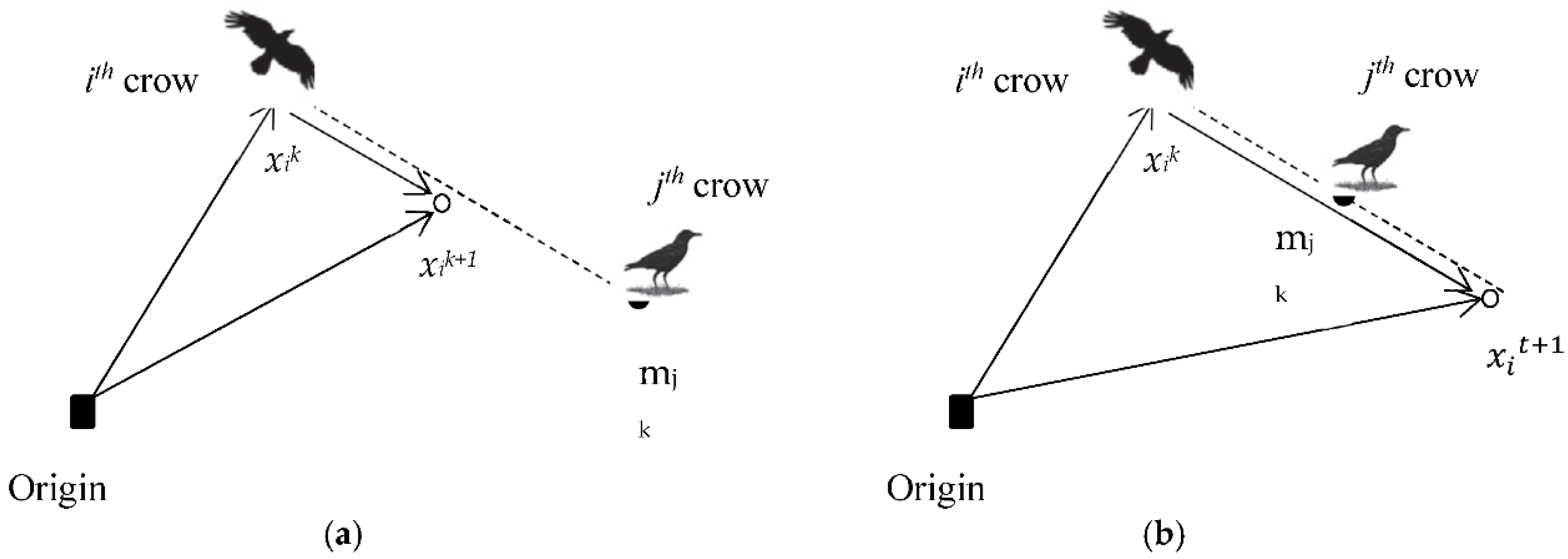
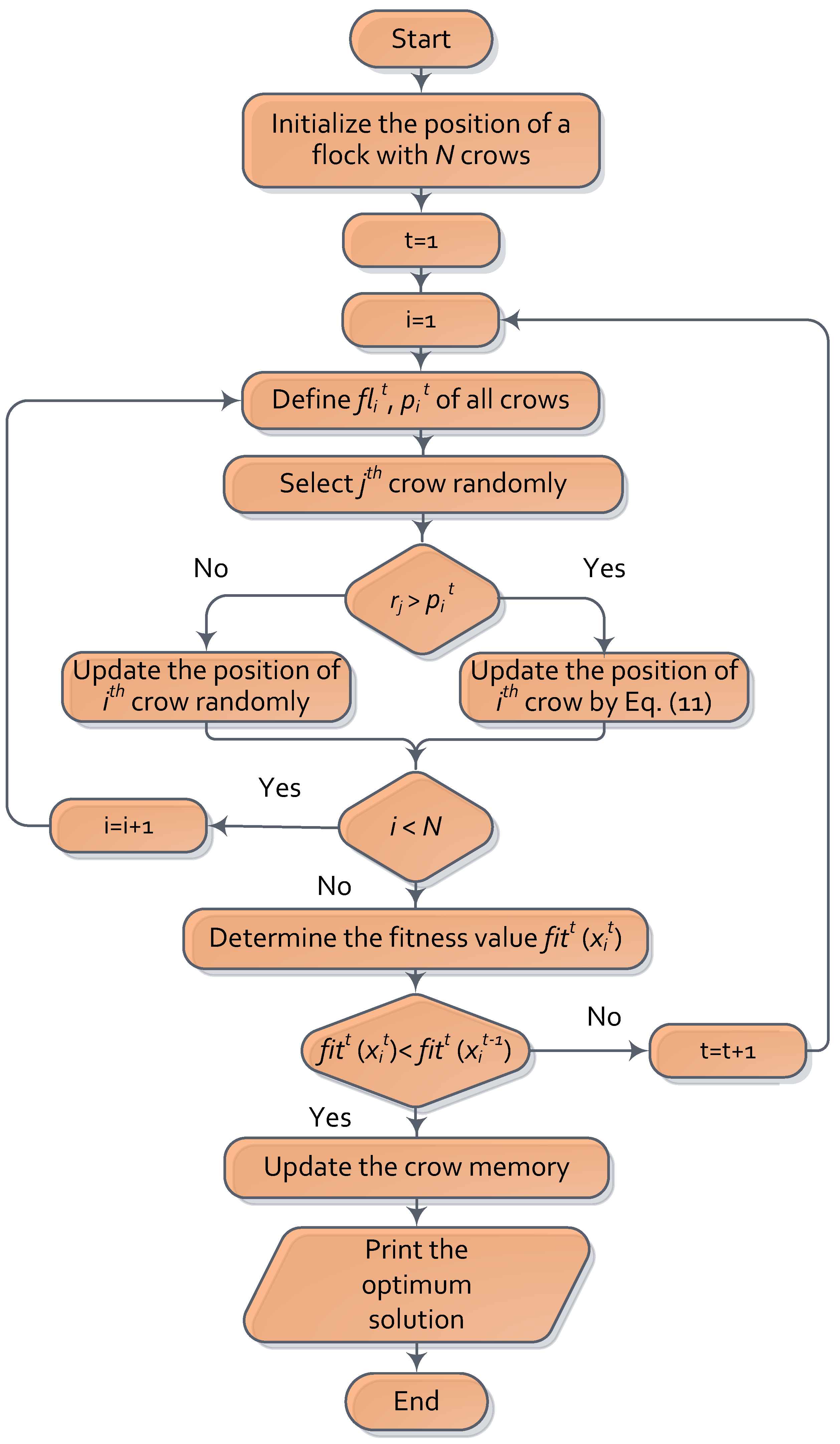

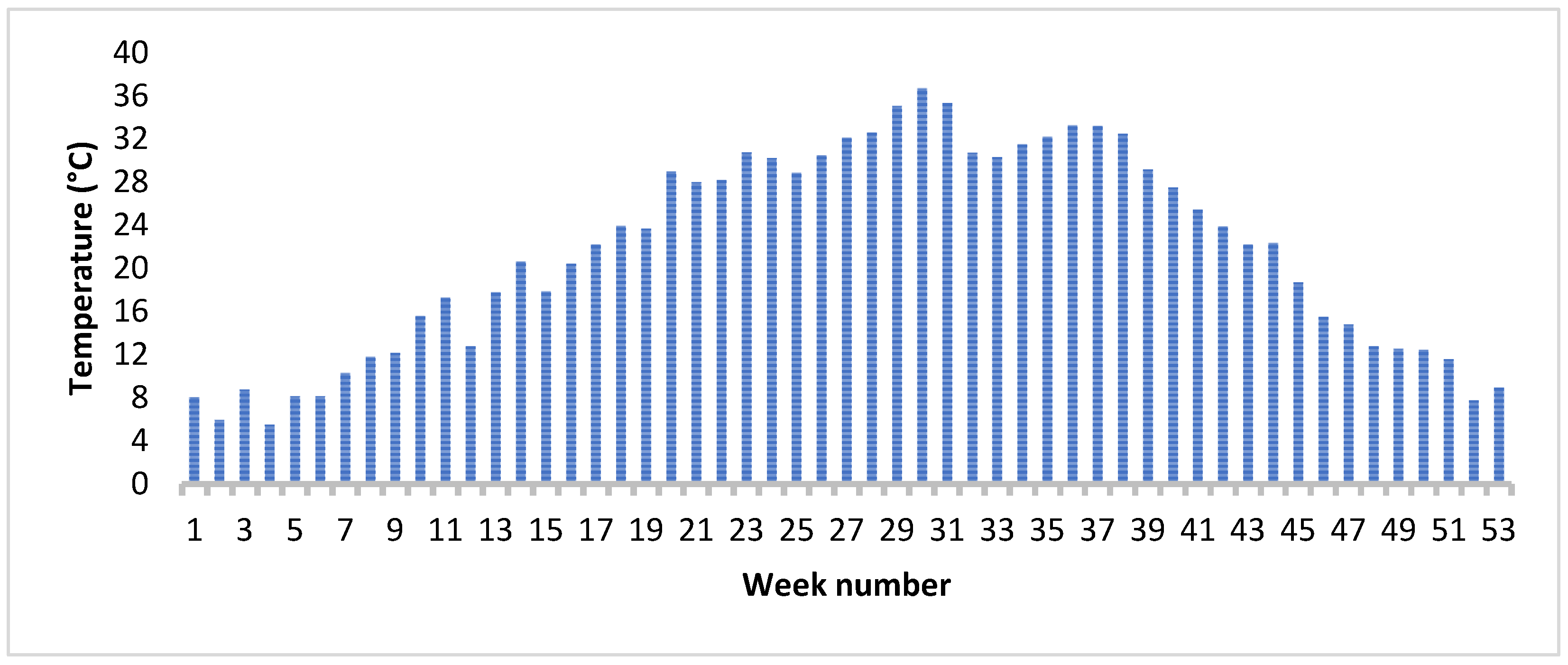

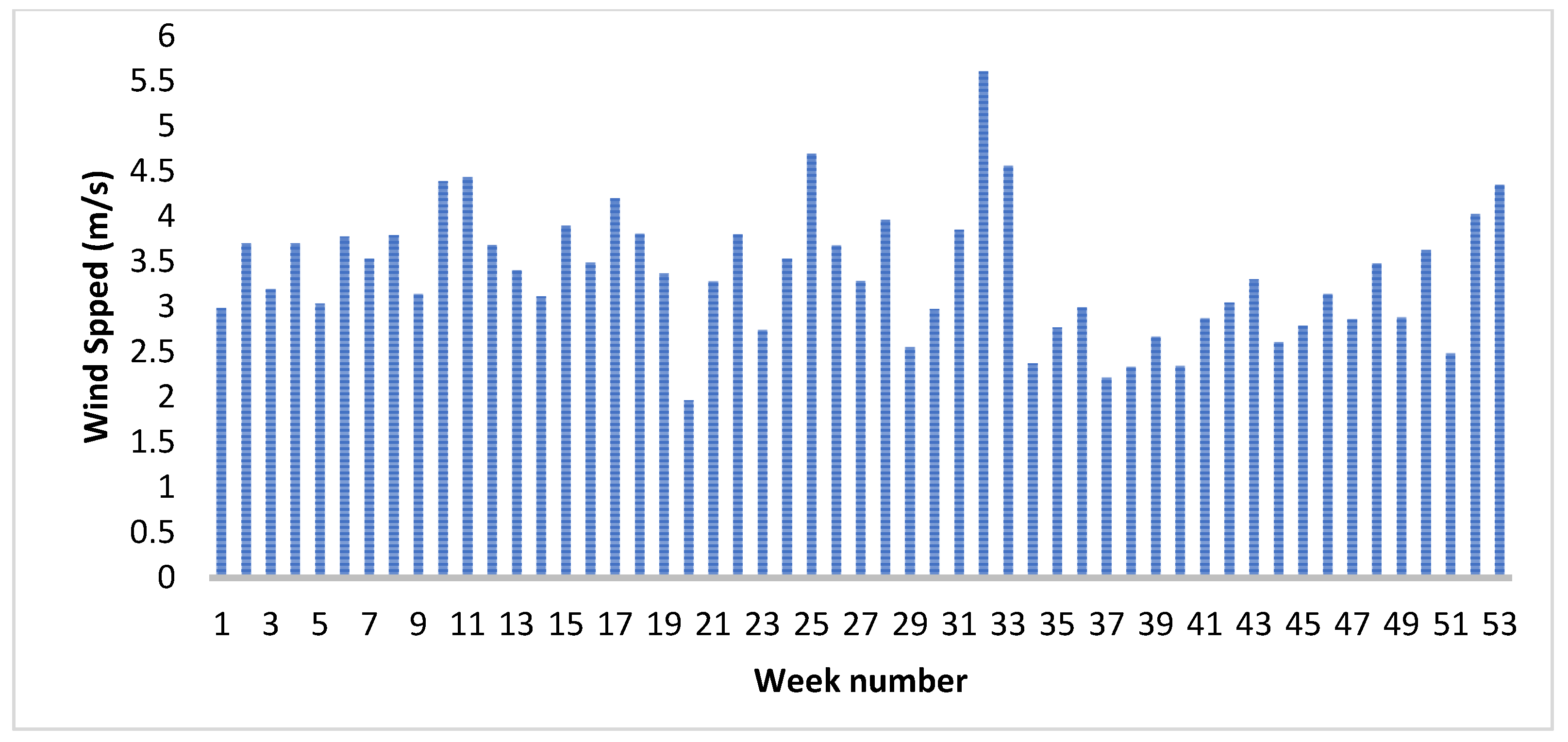
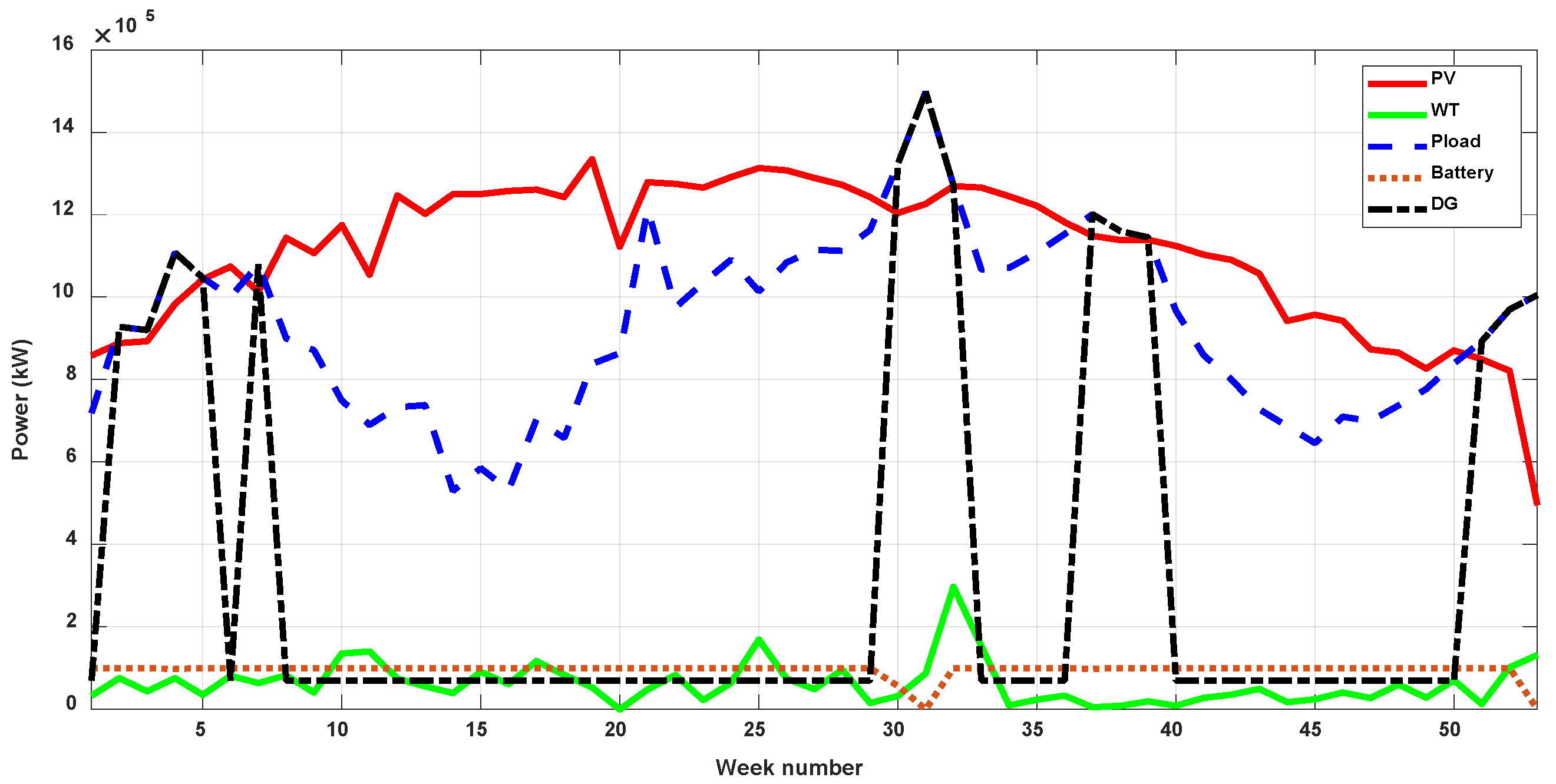
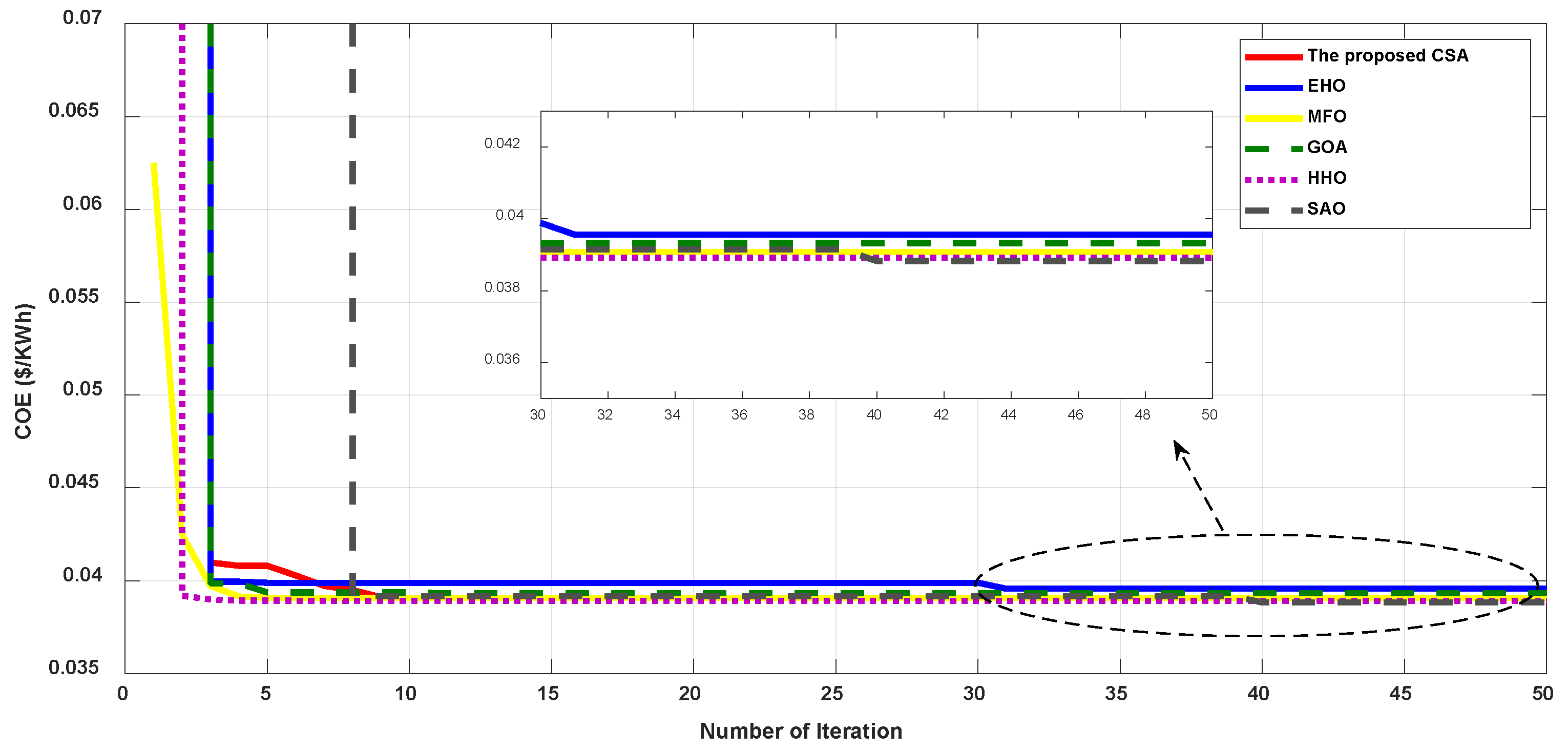
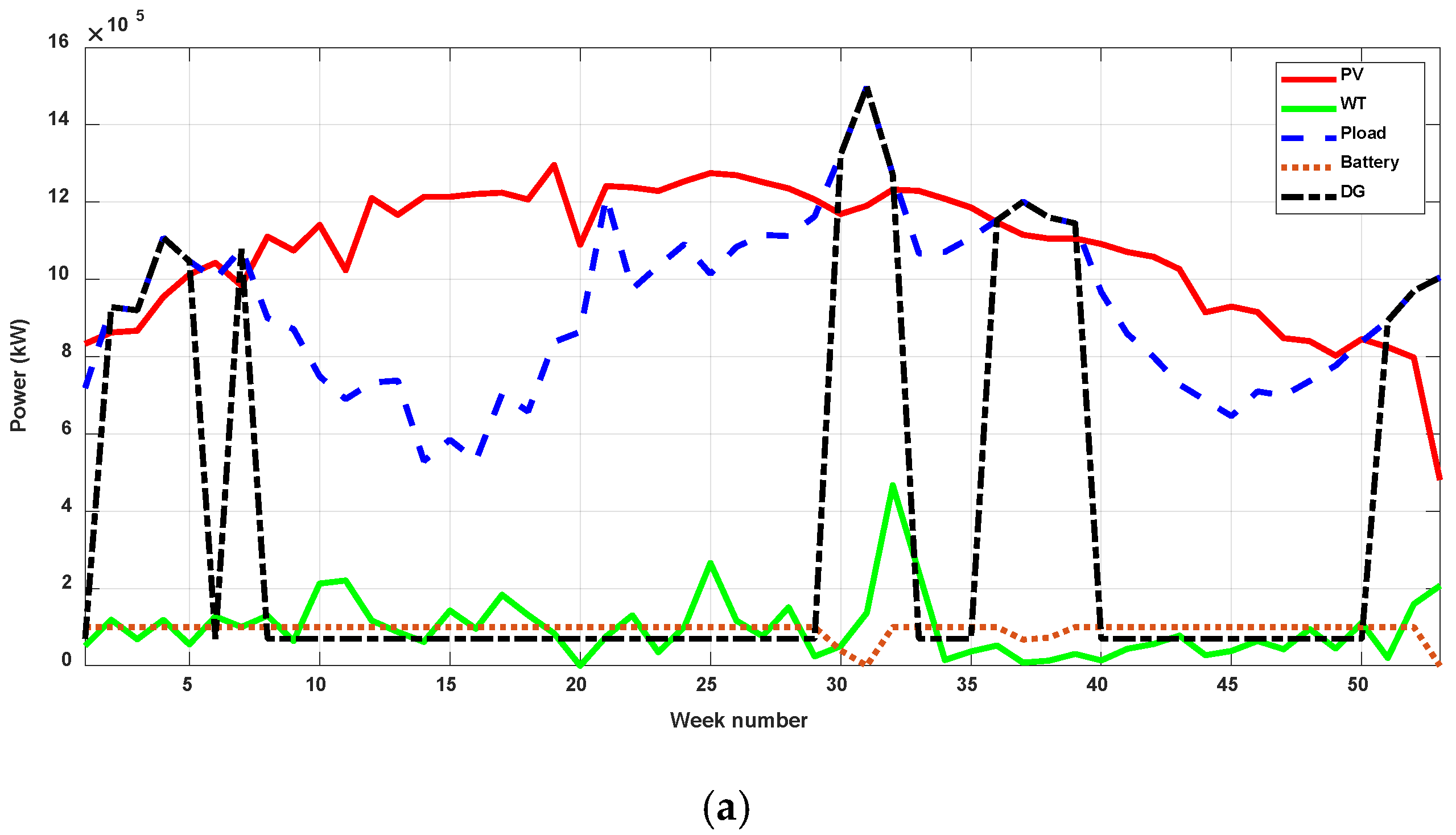


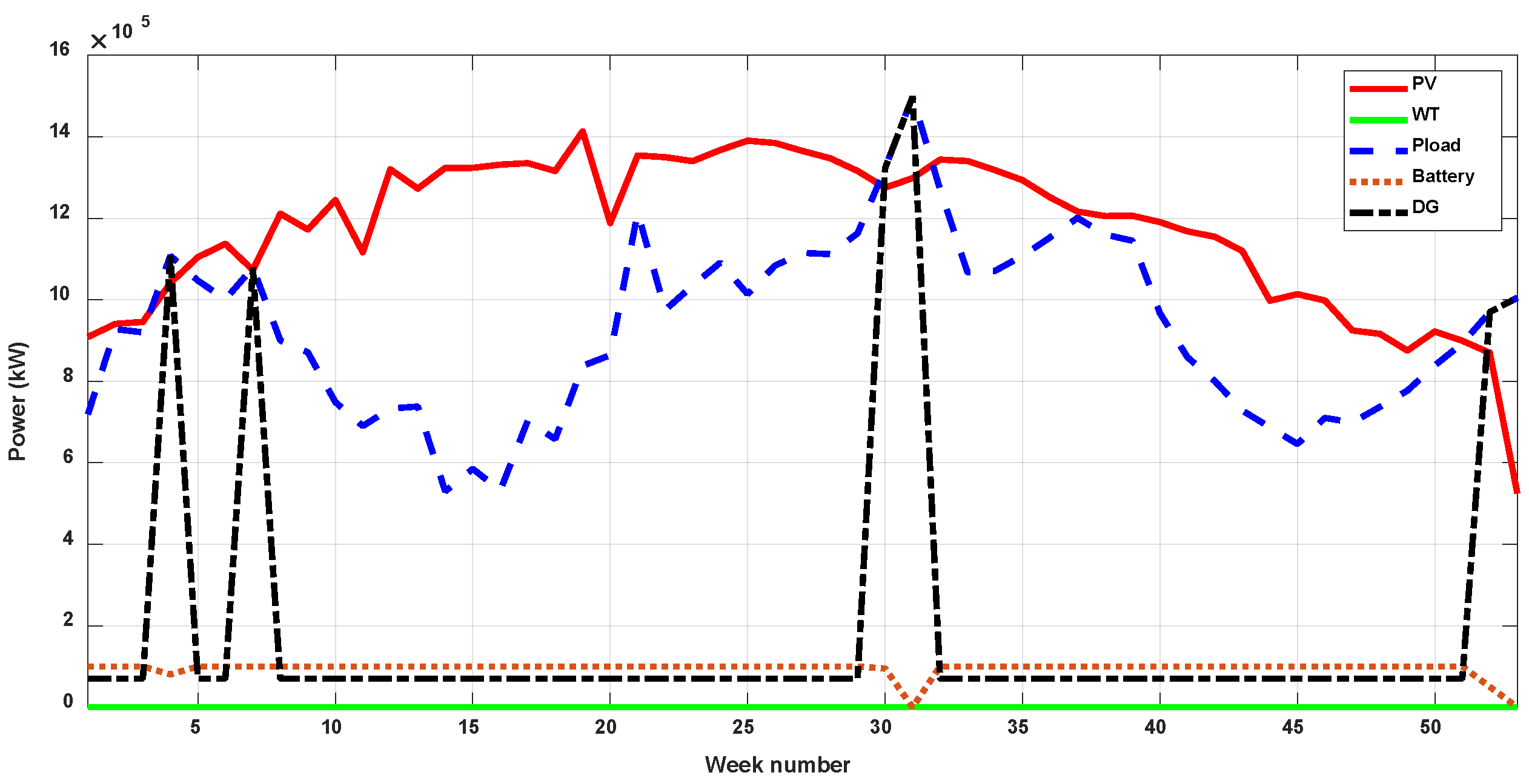
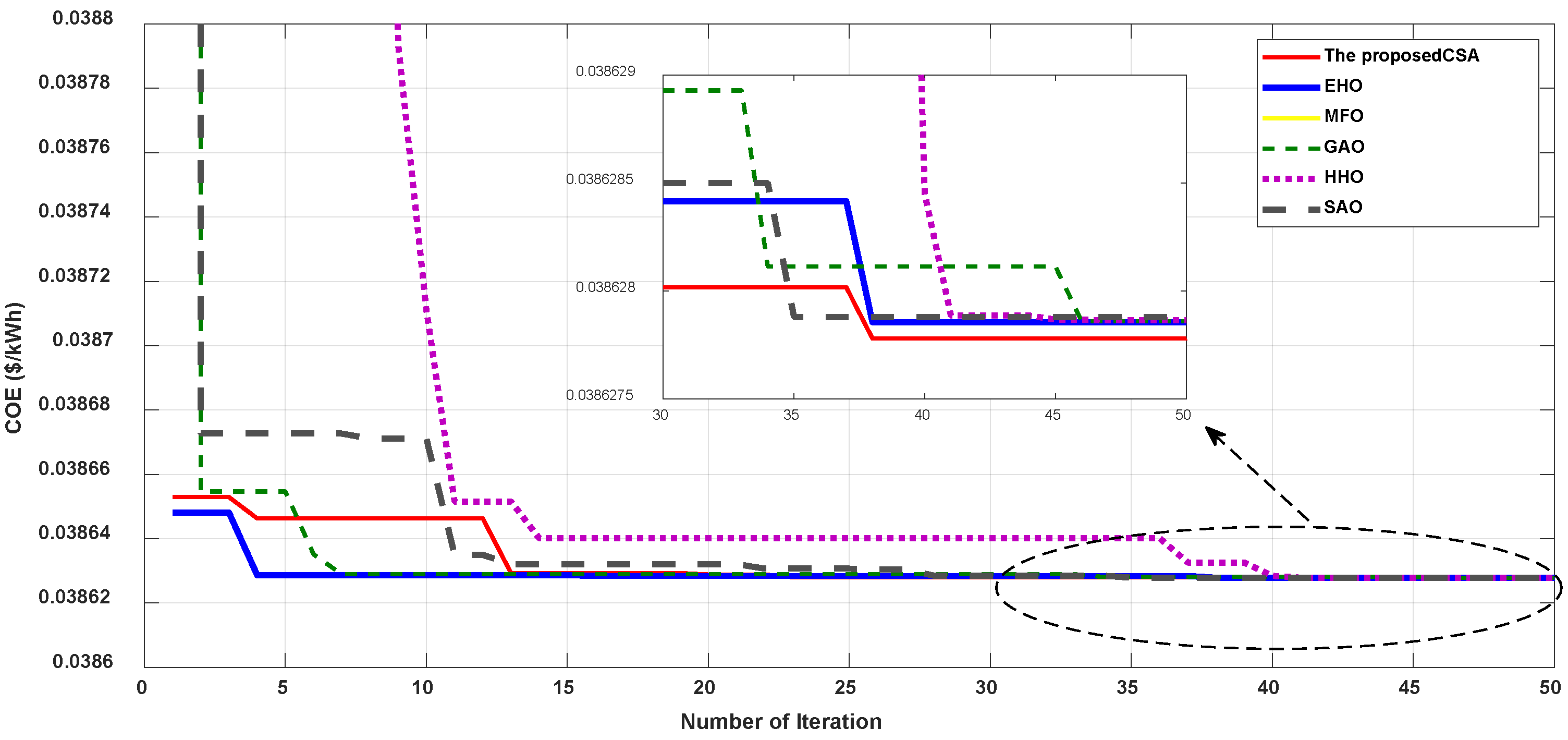
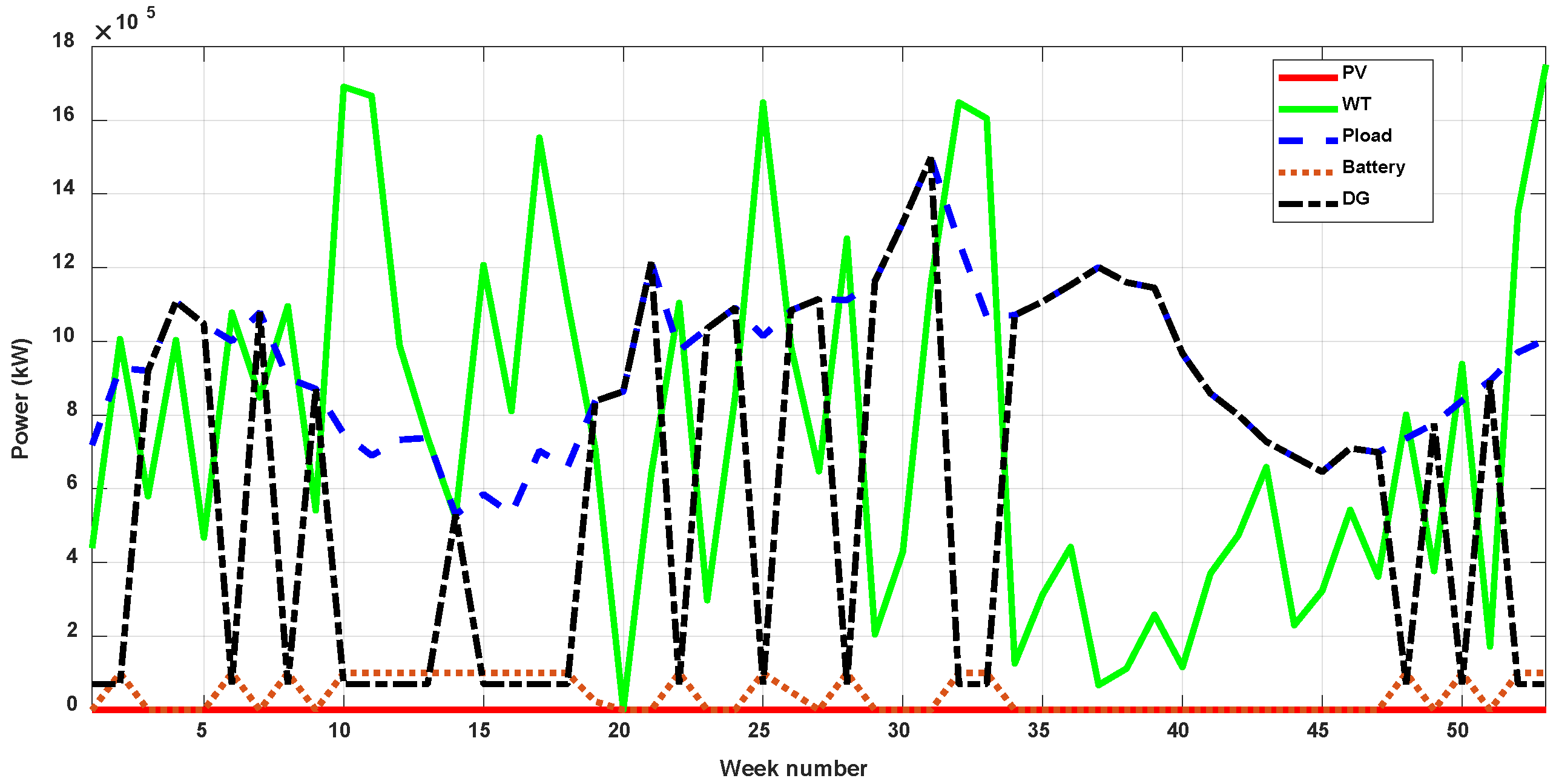
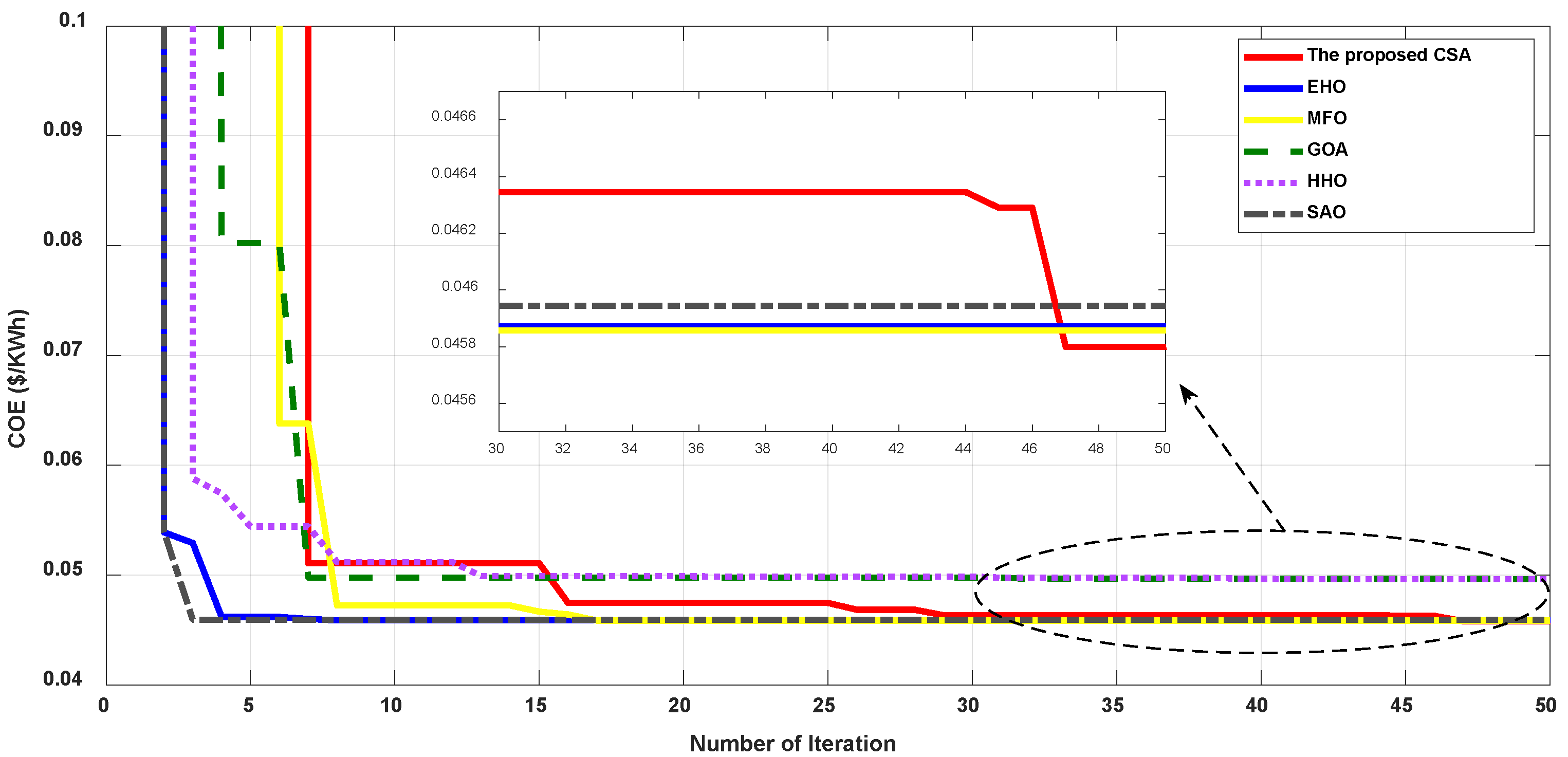
| Component | Parameter | Value |
|---|---|---|
| PV panel | Module Name | Chsm66 12P/HV-345 |
| Maximum power (Pmp) | 345 W | |
| Voc | 46.37 V | |
| Isc | 9.67 A ± 5% | |
| Vmp | 37.38 V | |
| Imp | 9.23 A | |
| Maximum voltage | DC 1500 V | |
| Nominal temperature | 46 °C | |
| Cell Technology | Poly-Si | |
| WT | Nominal power | 4.0 /4.2 MW |
| 3 m/s | ||
| 22.5 m/s | ||
| Re cut-in wind speed | 20 m/s | |
| Rotor diameter | 150 m | |
| Swept area | 17,671 m2 | |
| Frequency | 50/60 Hz | |
| Nominal temperature | −20 °C ~+45 °C | |
| Battery | Rated Power | 1 Mwh |
| Efficiency | 90% | |
| Normal capacity | 1600 Ah | |
| Nominal Voltage | 690 V | |
| Normal charging current | 200 A | |
| Normal discharging current | 500 A | |
| Internal Resistance | ≤1 mΩ | |
| Maximum SOC | 90% | |
| Minimum SOC | 10% | |
| DG | Rated Power | 70 MW |
| Armature current | 3849 A | |
| Armature voltage | 13,800 V | |
| Field current | 766 A | |
| Excited voltage | 300 V | |
| Power factor | 0.8 | |
| Inverter | Technical specifications | SUN2000-60KTL-HV-D1-001 |
| 98% | ||
| Maximum input voltage | 1500 V | |
| Maximum current | 22 A | |
| Maximum Isc | 30 A | |
| Starting voltage | 650 V | |
| Nominal input voltage | 1080 V |
| Parameter | Value |
|---|---|
| Photovoltaic panel | 1066.7 USD/kW |
| Wind Turbine | 1250 USD/KW |
| Battery | 774.8 USD/kWh |
| DG | 952 % USD/kW |
| Inverter | 1075 % USD |
| Project lifetime | 24 |
| Discount rate | 8% |
| Inflation rate of fuel | 5% |
| Interest | 0.13% |
| O&M cost | 0.2% |
| Optimizer | PV | WT | AD | COE (USD/kWh) | LPSP |
|---|---|---|---|---|---|
| The proposed CSA | 1611229 | 21 | 3 | 0.03883 | 0.9574 |
| EHO [37] | 1564327 | 33 | 10 | 0.03892 | 0.5504 |
| GOA [38] | 1487038 | 63 | 7 | 0.03908 | 0.5659 |
| HHO [39] | 1249375 | 75 | 7 | 0.03957 | 0.6131 |
| SOA | 1486628 | 43 | 10 | 0.03908 | 0.5664 |
| MFO | 1365105 | 56 | 7 | 0.03933 | 0.60734 |
| Optimizer | PV | AD | COE (USD/kWh) | LPSP |
|---|---|---|---|---|
| The proposed CSA | 1706217 | 3 | 0.03862784 | 0.9999 |
| EHO [37] | 1706224 | 3 | 0.03862785 | 0.5099 |
| GOA [38] | 1706228 | 1 | 0.03862786 | 0.5028 |
| HHO [39] | 1706233 | 1 | 0.03862786 | 0.5028 |
| SOA | 1706241 | 10 | 0.03862788 | 0.5028 |
| MFO | 1706225 | 2 | 0.03862785 | 0.5099 |
Publisher’s Note: MDPI stays neutral with regard to jurisdictional claims in published maps and institutional affiliations. |
© 2022 by the authors. Licensee MDPI, Basel, Switzerland. This article is an open access article distributed under the terms and conditions of the Creative Commons Attribution (CC BY) license (https://creativecommons.org/licenses/by/4.0/).
Share and Cite
Alshammari, S.; Fathy, A. Optimum Size of Hybrid Renewable Energy System to Supply the Electrical Loads of the Northeastern Sector in the Kingdom of Saudi Arabia. Sustainability 2022, 14, 13274. https://doi.org/10.3390/su142013274
Alshammari S, Fathy A. Optimum Size of Hybrid Renewable Energy System to Supply the Electrical Loads of the Northeastern Sector in the Kingdom of Saudi Arabia. Sustainability. 2022; 14(20):13274. https://doi.org/10.3390/su142013274
Chicago/Turabian StyleAlshammari, Sulaiman, and Ahmed Fathy. 2022. "Optimum Size of Hybrid Renewable Energy System to Supply the Electrical Loads of the Northeastern Sector in the Kingdom of Saudi Arabia" Sustainability 14, no. 20: 13274. https://doi.org/10.3390/su142013274
APA StyleAlshammari, S., & Fathy, A. (2022). Optimum Size of Hybrid Renewable Energy System to Supply the Electrical Loads of the Northeastern Sector in the Kingdom of Saudi Arabia. Sustainability, 14(20), 13274. https://doi.org/10.3390/su142013274







